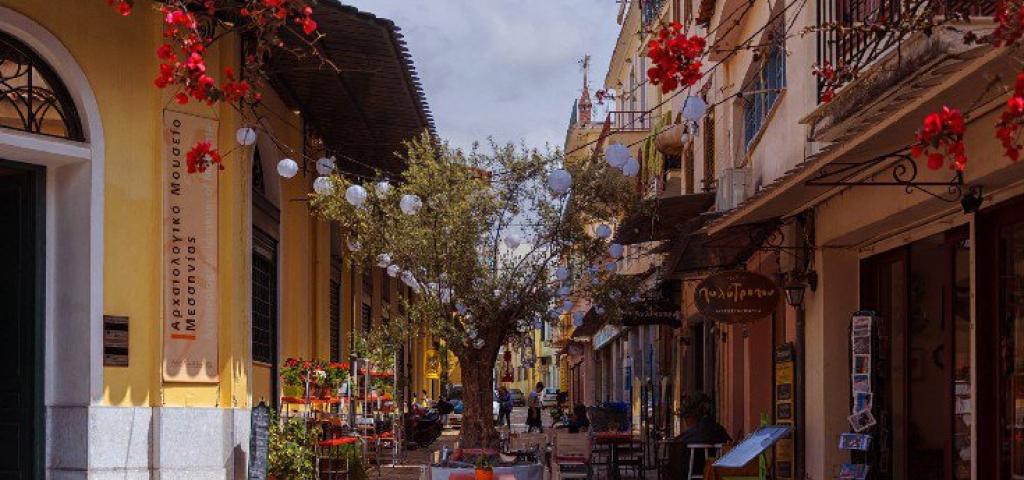

Kalamata is a city in the southwestern Peloponnese, capital of the prefecture of Messinia and port of the southern mainland of Greece. It is built at the foot of Mount Kalathi (the edge of Taygetos), in the heart of the Messinian Gulf. It is 239 km from Athens and 215 km from Patras. According to the last census (2011) it has 54.567 inhabitants. It has a temperate Mediterranean climate with warm winters and mild summers.
Kalamata is the second largest city in the Peloponnese (after Patras) and its history begins with Homer, who mentions Phares, an ancient city built approximately where the city's Frankish castle is located today. At the end of the 19th century the port of Kalamata was built, which is still in operation today, and the city is experiencing significant growth and prosperity. It was called the Marseilles of Moria. The city came into contact with the West and its culture, and a bourgeoisie was created, forming an important cultural base and heritage.
The most important event in the city's long history is its liberation from the Turks on 23 March 1821. It is an important urban, economic and commercial centre of the region as well as the administrative centre of the prefecture of Messinia.

The new Corinth-Tripoli-Kalamata motorway, which reduced the travel time to Athens and Thessaloniki, the operation of the Costa Navarino, which helped Messinia to gain a place on the world tourist map, the upgrading of the airport with flights to and from home and abroad and the construction of major infrastructure projects in the city and the communities of the Municipality have resulted in Kalamata in recent years to be on the road to growth and prosperity.
Student life in Kalamata
Kalamata has an intense nightlife in winter and summer as it combines the mountain and the sea. Kalamata is home to departments and schools of the University of Peloponnese. In recent years there have been extensive redevelopments that have changed the image of the city (central square, Faron Street, Historical Centre, seaside, pedestrian streets, etc.), while a bicycle path has been built, which starts from the market, at the height of the bus station and crosses the whole city in a magical route passing by the central square and the park of the OSE and ends at the beach.

Great events of national and even international importance are organized every year in the city. Among the sporting events, the Papaflessia (athletics) and the Kalamata Cup (rhythmic gymnastics) stand out, while among the cultural events, the International Dance Festival. Since 2012, the "Kalamatiano Carnival" has been organized on Halloween. The city celebrates on 2 February (the Feast of the Saviour), while on 23 March the liberation of Kalamata from the Turks is celebrated. The city has complete and modern sports facilities where everyone can play sports. Finally, it has a new, modern hospital as well as an international airport.
Sightseeing
Cultural sites: Kastro Amphitheatre, Municipal School of Dance - International Dance Centre, Municipal Art School, Municipal Cultural Centre of Kalamata "Pantazopouleios Folk School", Municipal Conservatory, Central & New Theatre Stage, Kalamata Dance Hall, Railway Museum.
Museums: Archaeological Museum of Messinia, War Museum of Kalamata.
Archaeological sites: Akovitika, Elaechorio, Volimou Artemisia, Ancient Thuria.
Galleries: Municipal Gallery of Kalamata "A.TASSOS", Gallery of Contemporary Greek Art of Kalamata.
Libraries: Public Central Library of Kalamata, Kalamata Public Library.
Information from the website of the Municipality of Kalamata (https://www.kalamata.gr/en/)
